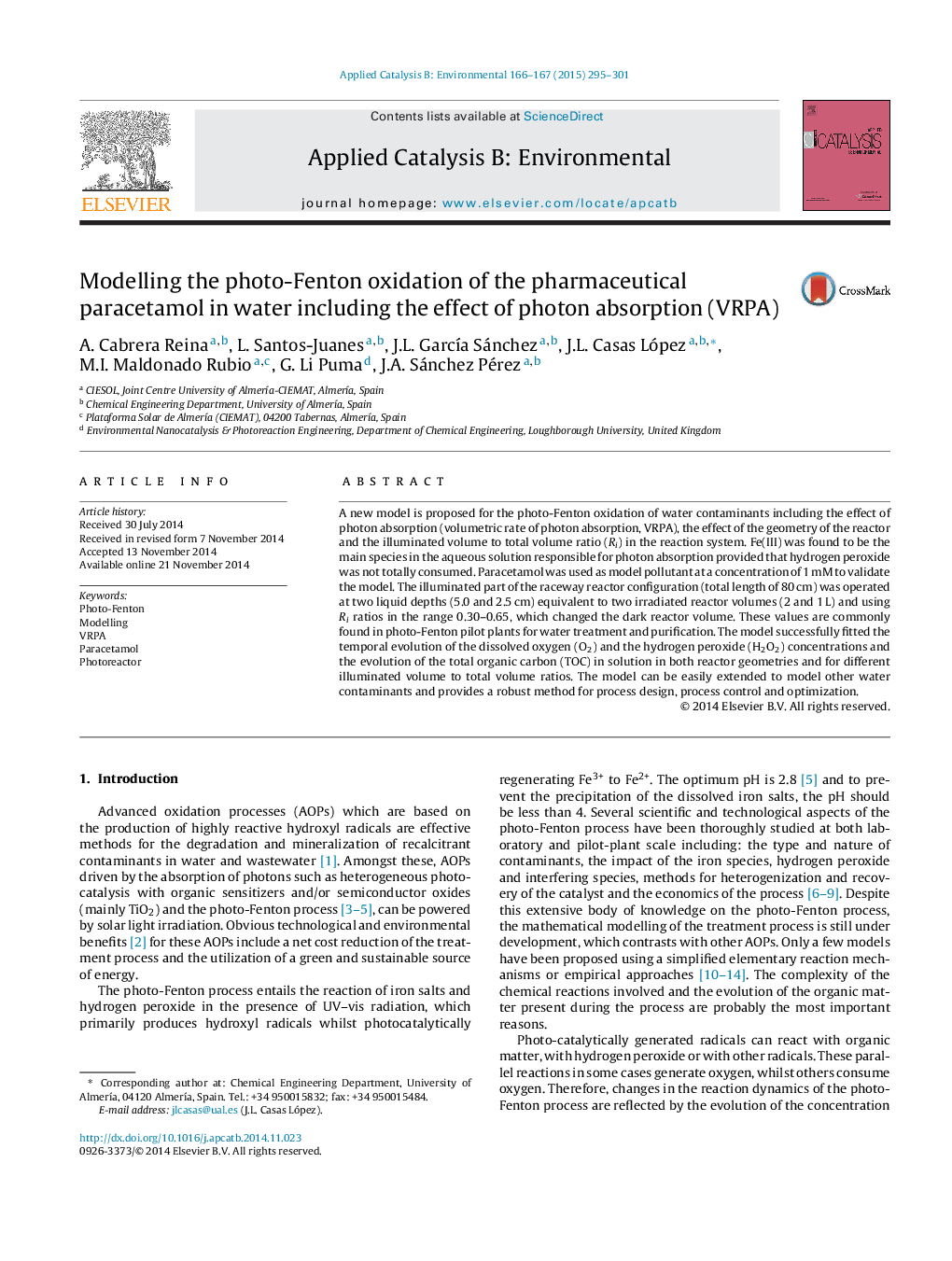| Article ID | Journal | Published Year | Pages | File Type |
|---|---|---|---|---|
| 45722 | Applied Catalysis B: Environmental | 2015 | 7 Pages |
•A photo-Fenton model based on general reactions has been proposed.•The model can be applied to other pollutant/s as it is based on lumped parameters.•The Ri ratio has been successfully included in the model allowing scaling-up purposes.•Photo-reactor geometry and light absorption are considered in the model through VRPA.•The model successfully fitted experimental data allowing process optimization.
A new model is proposed for the photo-Fenton oxidation of water contaminants including the effect of photon absorption (volumetric rate of photon absorption, VRPA), the effect of the geometry of the reactor and the illuminated volume to total volume ratio (Ri) in the reaction system. Fe(III) was found to be the main species in the aqueous solution responsible for photon absorption provided that hydrogen peroxide was not totally consumed. Paracetamol was used as model pollutant at a concentration of 1 mM to validate the model. The illuminated part of the raceway reactor configuration (total length of 80 cm) was operated at two liquid depths (5.0 and 2.5 cm) equivalent to two irradiated reactor volumes (2 and 1 L) and using Ri ratios in the range 0.30–0.65, which changed the dark reactor volume. These values are commonly found in photo-Fenton pilot plants for water treatment and purification. The model successfully fitted the temporal evolution of the dissolved oxygen (O2) and the hydrogen peroxide (H2O2) concentrations and the evolution of the total organic carbon (TOC) in solution in both reactor geometries and for different illuminated volume to total volume ratios. The model can be easily extended to model other water contaminants and provides a robust method for process design, process control and optimization.
Graphical abstractFigure optionsDownload full-size imageDownload as PowerPoint slide
